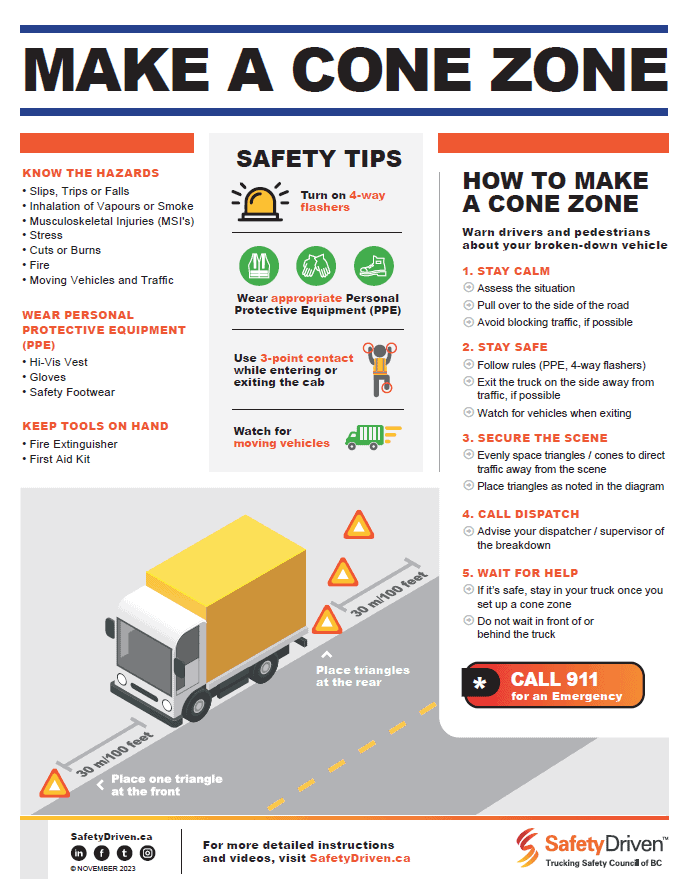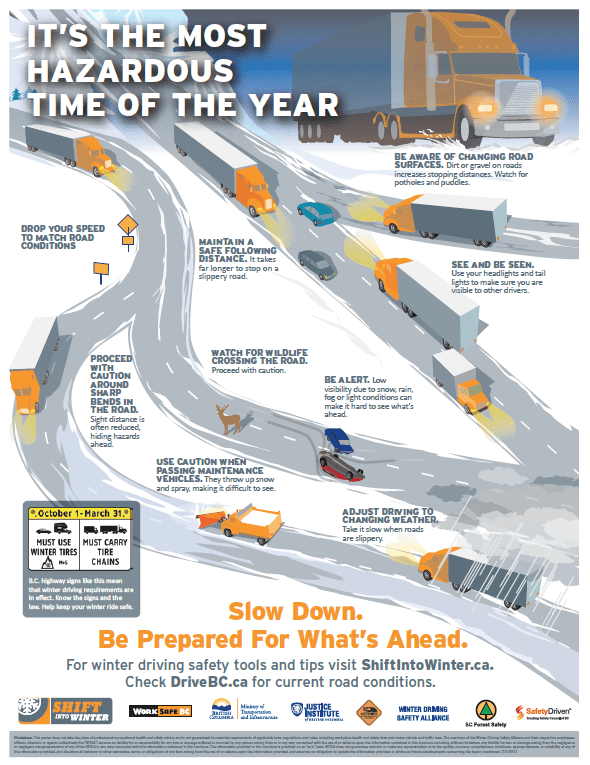Creating a National Safety Code Safety Plan
The 4 required components of the Code.
The National Safety Code plan will contain four components as follows:
- Drivers
- Vehicles
- Hours of Service
- Safety Plan
The Safety Plan must be the working plan of the company. It must include all components of managing drivers, including the hiring process and how the competency of the drivers is determined when the driver is hired. Training records must be maintained for all the drivers and any upgrading or remedial training that the drivers have during their time with the company.
Drivers should also know about the requirements of Carriers such as load securement, trip inspection reports, rules of the road, and legal requirements like reporting to weigh scales. Drivers represent the company so they must have the ability to show courtesy when driving; their actions on the road can easily define the company and the image of the company.
The Vehicle Safety Plan has to outline the vehicle maintenance plan, including everything from the pre-trip inspections done by drivers to major services that are conducted on the trucks at prescribed intervals. The plan must explain the processes for general vehicle maintenance and how repairs for the vehicle are completed, including when the repair requirements are reported, a job typically completed by the drivers. The plan will explain the process of how the complaint is reported and follow-through to when the work is completed. Then, of course, the paperwork has to be filed and maintained for at least three years. The paperwork must include the original pre-trip inspection report that initiated the repairs for the vehicle.
Mandatory vehicle inspections (MVIs) are not part of the vehicle safety plan but are a legal requirement for all trucks over 8,200 kgs in British Columbia. If vehicle inspections are passed regularly, this indicates that the vehicles are being maintained.
If the company does long hauling, then the Hours of Service will be a major component for reporting the driver’s hours of operation and to have a cross-checking system to ensure that the drivers do not drive too far in a day, work too many hours, or a combination of both.
The Carrier must keep accurate records for all the drives and ensure that all drivers get enough rest time. Hours of Service logs must be kept for a minimum of six months in BC. They may be kept longer for IFTA (International Fuel Tax Authority). This will ensure that all records can be verified by where the driver was and for how long.
Company Safety Plans usually include:
- Load securement requirements
- Transportation of Dangerous Goods
- Trip Inspection Requirements
- there are usually a part of the safety plans for the company
- Policy and Procedures
- includes driver responsibilities
The company must ensure that all drivers are aware of the requirements of the company’s safety policy by having them sign a statement listing the responsibilities of the driver.
The Safety Plans for the company is the process and procedures for the companies operations. Everything the company does must be reflected in Safety Plans with respect to drivers, vehicles, Hours of Service, and safety requirements of the company.
The Safety Plans must be reviewed and include the operations of the company such as all standard operating guidelines and operations procedures. The Safety Plans should be an evolving document so as the company develops so too do the Safety Plans for the company.
For more information about the National Safety Code and course, registration visit the BC Trucking Association.
Latest Resources
Make a Cone Zone
Dowload this poster for tips on how to make a safe cone zone.Winter Hazards Poster
Drivers need to recognize winter hazards. Share this poster to remind drivers how to ...

